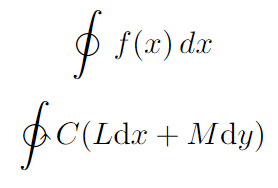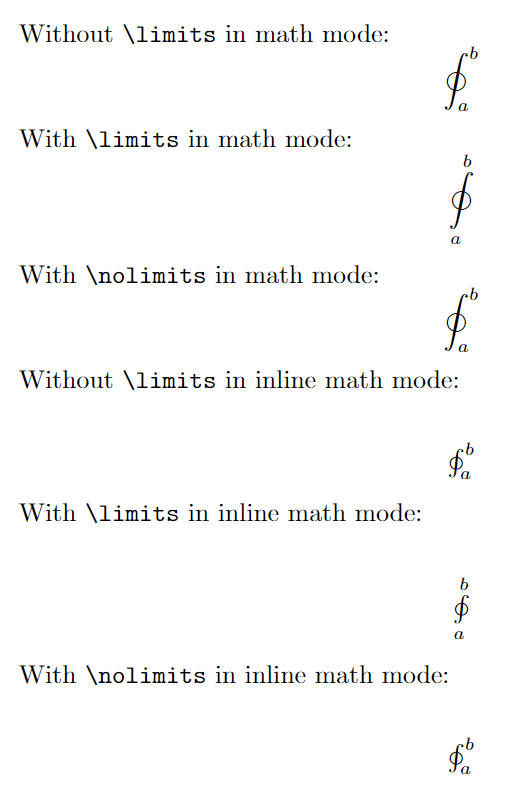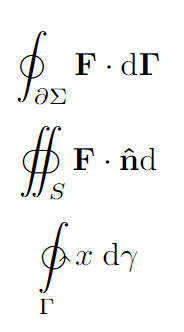Closed or Contour integral (∮, ∲) in LaTeX
In this tutorial, you will learn how to get different types of Closed integral or contour integral in LaTeX.
There is no default command to get the Closed or Contour integral In LaTeX. But you can load the esint package to get different types of Closed integral symbols. I have listed all the commands that you use after loading the esint package.
| Name | Command | Output |
|---|---|---|
| Contour integral | \oint | |
| Closed surface integral | \oiint | |
| Closed surface integral | \varoiint | |
| Clockwise contour integral | \varointclockwise | |
| Counterclockwise contour integral | \ointctrclockwise | |
| Counterclockwise contour integral | \varointctrclockwise | |
| Clockwise contour integral | \ointclockwise |
The txfonts package also provides more types of Clockwise and Counterclockwise contour integral. Take a look.
| Command | Output |
|---|---|
\oiintctrclockwise | |
\oiintclockwise |  |
\varoiintclockwise | |
\varoiintctrclockwise | |
\oiiintclockwise |  |
\oiiintctrclockwise |  |
\varoiiintclockwise |  |
\varoiiintctrclockwise |  |
\documentclass{article}
\usepackage{esint}
\begin{document}
$$ \oint\, f(x)\, dx $$
$$ \ointctrclockwise C(L\mathrm{d}x+M\mathrm{d}y) $$
\end{document}Output:

Closed integral with limits
To add limits with the Closed integral you can do this:
\oint_{min}^{max}
You can also use \limits and \nolimits to change the position of min and max.
\documentclass{article}
\usepackage{esint}
\begin{document}
\noindent Without \verb|\limits| in math mode:
$$ \oint_{a}^{b} $$
With \verb|\limits| in math mode:
$$ \oint\limits_{a}^{b} $$
With \verb|\nolimits| in math mode:
$$ \oint\nolimits_{a}^{b} $$
Without \verb|\limits| in inline math mode:\\
\begin{center}
$ \oint_{a}^{b} $
\end{center}
With \verb|\limits| in inline math mode:\\
\begin{center}
$ \oint\limits_{a}^{b} $
\end{center}
With \verb|\nolimits| in inline math mode:\\
\begin{center}
$ \oint\nolimits_{a}^{b} $
\end{center}
\end{document}Output:

More examples:
\documentclass{article}
\usepackage{esint}
\begin{document}
$$ \oint_{\partial \Sigma}\mathbf{F} \cdot \mathrm{d}\mathbf{\Gamma} $$
$$ \oiint_S \mathbf{F} \cdot \mathbf{\hat{n}} \mathrm{d} $$
$$ \ointctrclockwise\limits_{\Gamma} x\; \mathrm{d}\gamma $$
\end{document}Output:

Leave a Reply